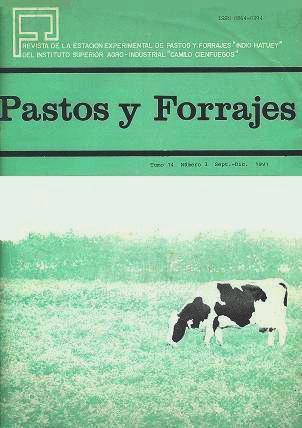Evaluación de diferentes materiales absorbentes para ensilar hollejo de cítrico
Keywords:
Silage, citrus pulp, nutritive valueAbstract
With the objective of eliminating the fermentative dificulties presented by citrus husks during their conservation and the contamination generated by their effluents, a study was carried out in order to evaluate the effect of the inclusion of absorbing materials on fermentation and nutritive value. The treatments consisted in: a) citrus husk; b) citrus husk plus 10 % sugarcane bagasse; c) citrus husk plus 20 % pre-dried mulberry; and d) citrus husk plus 10 % bean straw. The silages were made through the successive layer technology. The measurements were: DM, OM, CP, pH and N-NH3 /Nt (%). The nutritive value was determined in metabolism cages using six sheep per treatment and the results were analyzed through a completely randomized design. The intakes
were: a) 47,4bc; b) 44,1c ; c) 50,9 b and d) 59,3ª g DM/kg P 0,75. The OMD (x = 77,1 %) of the silages evaluated indicated that they are good energy carriers. The inclusion of mulberry favored CPD (78,1 %), as it presented higher values than the rest of the silages (x = 72,0 %). The lowest CFD was found in the silages with sugarcane bagasse (63,9 %) because of its low nutritive value. This research showed the feasibility of achieving high quality silages in which the citrus husk is the main component, as well as the importance of including absorbing materials in them.








